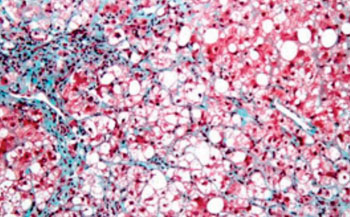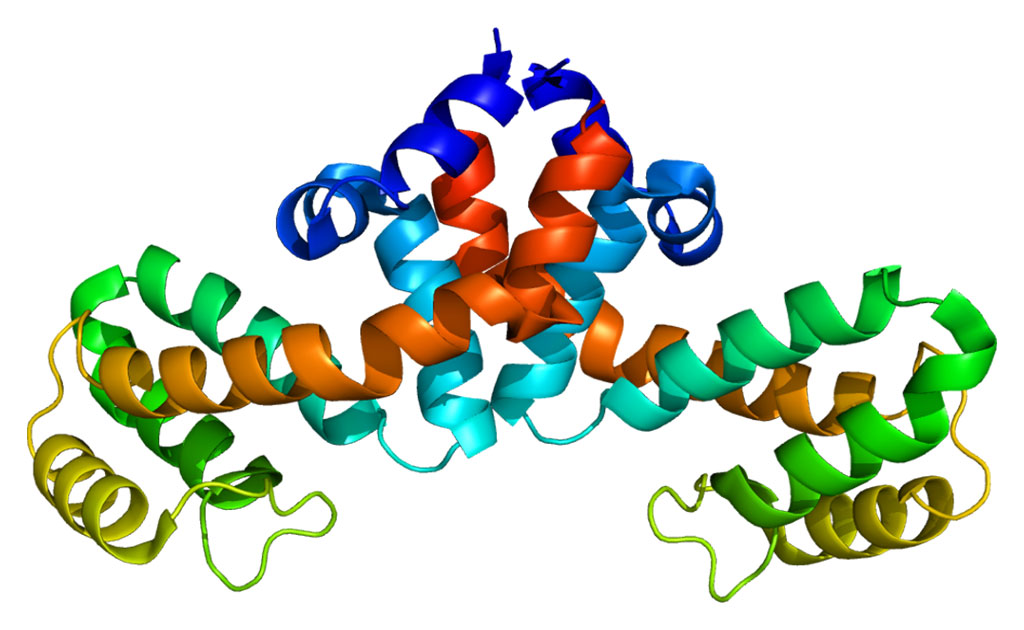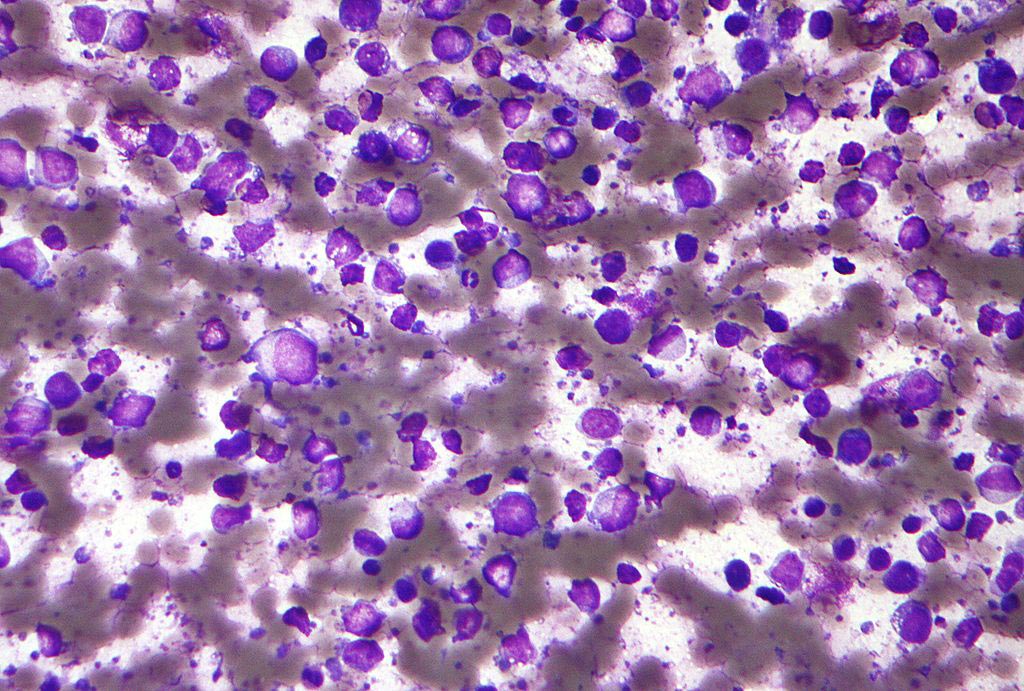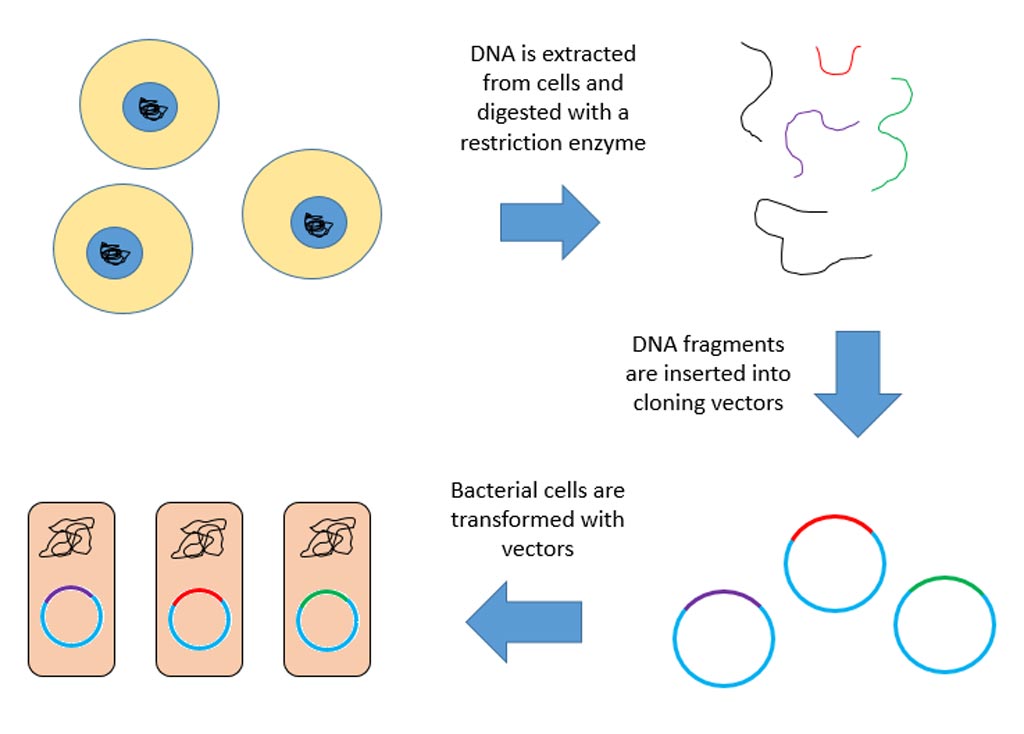Twins Study Reveals Fatty Liver Disease Heritability
By LabMedica International staff writers
Posted on 14 Oct 2015
A study involving identical and fraternal twins showed that incidence of fatty liver disease was equivalent for the identical twins but not correlated among the fraternal twins, suggesting that the syndrome might be inherited.Posted on 14 Oct 2015
Since little is known about the heritability of hepatic fibrosis and hepatic steatosis, investigators at the University of California, San Diego (USA) carried out a study utilizing a well-characterized cohort of twins to determine to what extent fatty liver disease was inheritable.

Image: Micrograph of an inflamed fatty liver. White indicates areas of fat; red are hepatocytes or liver cells. Bluish areas are fibrotic strands (Photo courtesy of Dr. James Heilman).
The investigators collected data on medical history, physical examinations, fasting laboratory test results, and liver health from 60 pairs of twins (42 monozygotic or identical and 18 dizygotic or fraternal). All participants underwent an advanced magnetic resonance imaging (MRI) examination of the liver from January 2012 through January 2015. Hepatic steatosis was quantified noninvasively by MRI and determined based on the proton-density fat fraction (MRI-PDFF); liver fibrosis was measured based on stiffness measured by magnetic resonance elastography.
Results published in the August 20, 2015, online edition of the journal Gastroenterology revealed that the presence of hepatic steatosis correlated between identical twins but not between fraternal twins. The level of liver fibrosis also correlated between identical twins but not between fraternal twins.
"The most common known causes of hepatic fibrosis have been viral hepatitis C infections, alcohol abuse, poor diet, and obesity and nonalcoholic steatohepatitis or NASH, which resembles alcoholic liver disease but occurs in people who drink little or no alcohol," said first author Dr. Rohit Loomba, associate professor of clinical medicine at the University of California, San Diego. "We found, however, that hepatic fibrosis and steatosis (infiltration of liver cells with fat) are strong genetic traits. At around 50% heritability, they are more genetic than body mass index. This evidence that hepatic steatosis and hepatic fibrosis are heritable traits has major implications. It means that we can now look for the relevant genes as potential therapeutic targets."
Related Links:
University of California, San Diego














